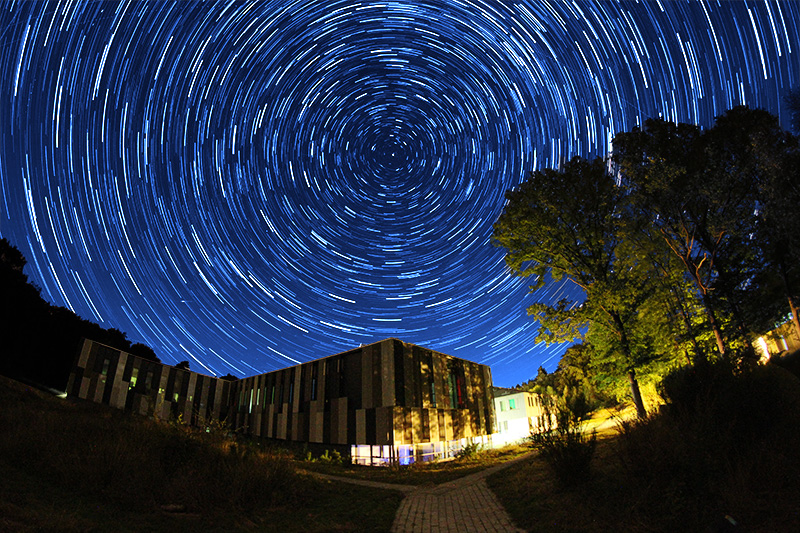These buildings in the Dwingelderveld Heide, next to the Dwingeloo Radio Telescope, host two astronomical institutes. ASTRON is the Netherlands Institute for Radio Astronomy, and it operates the distributed radio telescope interferometer arrays LOFAR and WSRT-APERTIF. JIVE is a European Research Infrastructure Consortium, and it operates the central data processor and the data archive of the European VLBI Network (EVN). The EVN includes some of the greatest radio telescopes on Earth from the Americas, Europe, South Africa, and Asia. In radio astronomy, scientists study the deep skies through the radio waves (invisible to our eyes) received by antennas of few tens to few hundred meters in diameter. The technique of very long baseline interferometry (VLBI) has played a crucial role in the understanding of enigmatic phenomena such as fast radio bursts (FRB), the production of relativistic particle streams (jets) in the aftermath of merging binary neutron stars that produce gravitational waves, and in the making of the first “image” of a supermassive black hole (popularly known as the black hole shadow), or rather the emission around it.
Strange as it may sound, the astronomers lurking in these buildings rarely set their eyes on the stars. While the Dwingelderveld Natural Park that hosts these buildings offer some of the darkest skies you can find in the mainland Netherlands. This picture is a homage to the beauty of the Drenthe night skies and to the institutes that conduct cutting edge research in astronomy.
Technical data
20-21 September 2020, Dwingeloo
Canon EOS 600D on tripod,
Samyang 8mm f/3.5 UMC, Fish-eye CS II
154x30s pictures taken between 23:02-00:25 CEST
